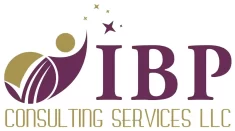Every goal you outline is what in human resources we call “Change Management.” Whether it is a team of fifty, a handful, or all about you, when the plans are laid out and effectively communicated in a logical and understood process, the likelihood of accomplishing the next tasks jumps infinitely high. It is important to realize that change is not only about having this preparation. It must also communicate what the steps are to every person involved. Clear communication is crucial – clear communication of the what, how, why, where, who, and when. We call this “training.”
Regardless of any formal definition of “training,” delivering the new messages to your team (and to yourself) is critical in seeing your plan through to fruition. I can’t even count the number of times when I work with a team where the best-laid plan falls flat because one person was out sick on that particular day. Or, more commonly, a spur of the moment decision is made with a few people over lunch and the rest are left to learn one by one about the change. To that pro-emptive group, the “improvement” may seem logical or easier. Those in favor, “Aye!” Everyone there is on board. The problem comes when (1) not everyone was “there” and (2) the decision was made without any feedback of all impacted by the change.
In a hypothetical scenario, a sales group chooses to focus on improving workflow as well as client satisfaction. They design an outreach program to reallocate an afternoon for Les, their only certified coach, to provide the discovery and sign-up sessions onsite at new clients’ locations. The sales team agrees to schedule these on Tuesday afternoons as it is the slowest at the shop. They duly tell the two receptionists who love the idea too. So far, all aboard.
Fast forward our story one week. Chris is a technician that helps out as a customer care agent once a month. Chris was not present at the impromptu decision-making. Next shift, Chris answers the phone and schedules a new client appointment with Les on Tuesday the 10th at 3 p.m. The client arrives five minutes early, only to learn that Les is unavailable. Does this conversation sound familiar?
CLIENT: Can’t anyone else see me now? Those two over there don’t look like they’re doing anything.
RECEPTIONIST: I’m sorry, but, even if I wanted to fit you in, I can’t. Les is the only one certified to open these accounts. Les isn’t even here right now.
CLIENT: Why wasn’t I told this when I scheduled? When I made this appointment last week I told them I was new.
RECEPTIONIST: I’m sorry, as of two weeks ago, Les started going out to see clients in the afternoons. I guess whoever made your appointment didn’t know. How about next Tuesday at 10?
CLIENT: No, I’ll have to call back. Well, I wish someone could have at least called me beforehand to let me know. I rearranged my schedule and just went through horrible traffic to be here.
How much confidence do you have that this client will actually call back and reschedule? Can you relate?
In the next alternative scenario, a clear memo is sent to all employees explaining the changes, the benefits, and the process of booking an appointment offsite. There is a fifteen-minute online training session that all must attend to discuss the flow. It is also recorded and all employees marked with client care contact are required to sign off that they have reviewed the new policy and understand the steps. These communications and trainings all occur before the change takes place.
Now let’s look at this alternate phone call scenario if everyone had received this memo in the same fashion at the same time before the new policy took place:
CLIENT: I want to get started with your program. Last week when I called they told me I could come in at 2 p.m.
CHRIS: I’m delighted that you’ll be joining our membership. We just started taking Tuesday afternoon sign-ups as onsite visits. This means that Les can come to your location and you don’t even have to worry about getting here. Les is our certified coach who will guide you through all the details. Would 2 p.m. work for you?
CLIENT: That would be perfect! I was going to have to rearrange another appointment to be able to get there. This is even better! Thank you.
You can see the positive outcome to this conversation. I cannot emphasize this enough: appropriate training and communication are paramount in the realization of any program.
For solopreneurs, your job is to understand your new systems so you can prepare and remain consistent. In change management, the fewer surprises, the more successful the outcome.
Top 10 Tips for Change Management:
- Establish the intended OUTCOME of the change
- Clearly define WHAT is changing
- Set a DATE for the change
- Identify WHO will be impacted by these changes
- Distribute a TRAINING plan
- VERIFY everyone is updated
- LAUNCH
- Set a date to REVIEW the outcome
- Summarize and share outcome RESULTS
- ADJUST as needed
Dr. Ingrid Pyka is an executive business consultant that has helped companies and entrepreneurs find success in their goals, guiding them through millions of dollars in increased revenues. If you would like to book Ingrid to keynote your next event, contact ingrid@ingridpyka.com.







